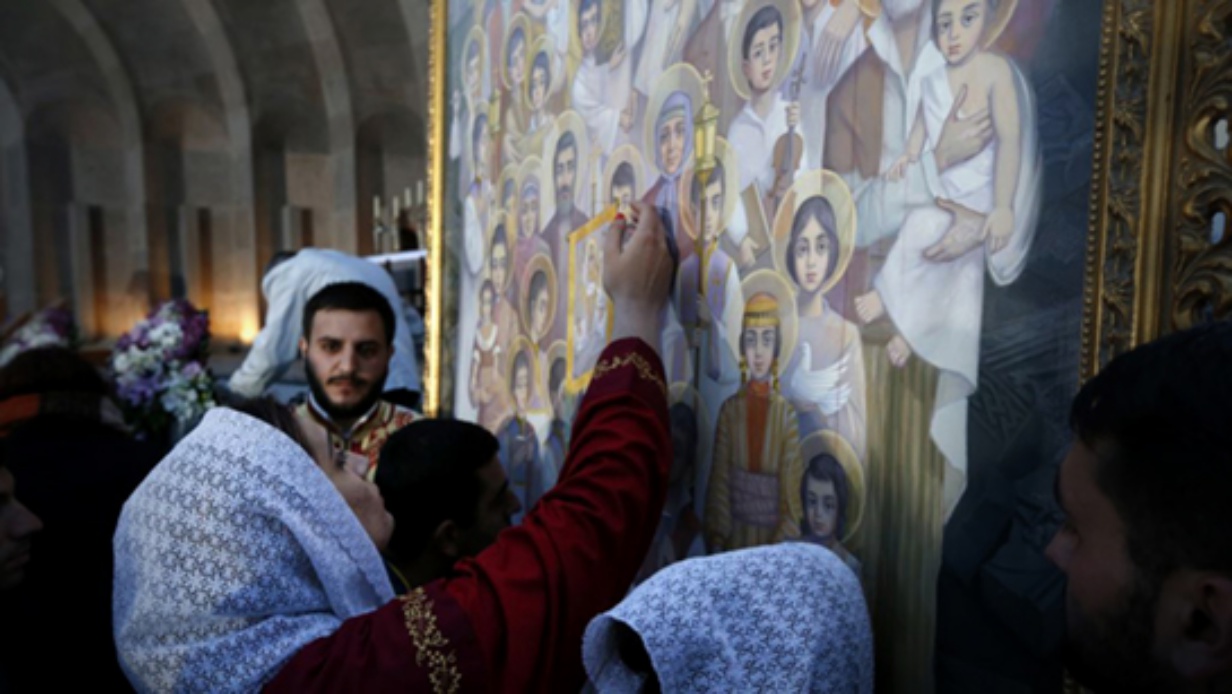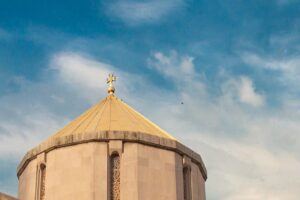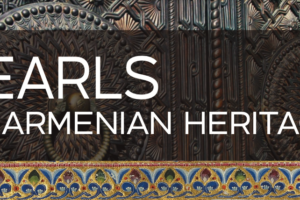More Than Just Paintings

What are icons, and how are they used in the Armenian Church?
Simply stated, an icon is an artistic image, likeness, or representation of someone or some event. Often they are paintings depicting Jesus Christ, the Virgin Mary, saints, angels, or biblical scenes.
But an icon is more than just a painting. Icons are images of the holy which provide access to the holy. They are hung and displayed in churches and homes, sometimes illuminated with candles or oil lamps. During liturgical services, they are venerated with incense. Sometimes a candle is placed in front of an icon of a saint, in which case it is customary to ask for the intercession of that particular saint. We bow before them and even kiss them in reverence of the holiness they represent.
Wall-paintings, mosaics, and stone carvings give us our earliest depictions of Christ, Mary, and the saints. From these early efforts, Christian art developed and the church accepted sacred imagery as objects of veneration. With the growth of Christianity in Armenia holy images proliferated, and praying before them became a popular expression of piety. The internal and external walls of Armenian churches became adorned with images, particularly with images of the cross, of Christ, of the saints and Biblical scenes.
Eventually a theology of icons in the Armenian Church developed. A treatise written around the year 600 and attributed to Vertanes Kertogh, Locum Tenens of the Catholicate at Dvin, describes holy images as having an educational and inspirational purpose, serving as kind of visual theology. Vertanes’ treatise is the oldest defense of icon veneration preserved in any language.
When speaking of images of Jesus Christ, Vertanes emphasizes that Christians do not worship the material artwork, but Him whom the image represents:
“When we prostrate ourselves before the Holy Gospel, or when we kiss it, we are not prostrating ourselves before the ivory and the paint, purchased from barbarian countries, but before the Word of the Savior which is written upon the parchment…. By the same token one bows before the icons not because of their pigment, but because of Christ, in whose name they have been painted.”
In the eighth century St. John of Odzoon (Catholicos at Dvin, 717-728) developed an even deeper, mystical theology of icons in the Armenian Church tradition. He explained that it is possible to represent the image of God because of the Incarnation of Jesus Christ. Since God took human, material form in the person of Jesus Christ, when bowing down before an icon of Christ, we are actually bowing before Christ enthroned; while looking at the visible, we recall to our mind the invisible.
Although there have been times when the veneration of icons was in dispute among Christians, or suppressed by non-Christian foreign powers, today in the Armenian Church the practice of painting, consecrating, and venerating icons endures. This devotional practice reflects a deep Christological understanding of holy images. Consider the tradition of placing an image of the Virgin Mary and Infant Christ over the altar table where Badarak is celebrated. The image of the Mother-of-God and Christ Child glorifies the virtue of her consent to become the “living temple” of the Incarnate Lord. Through Mary, the gift of salvation entered the world in the flesh and blood of Jesus Christ. What better image to place above the holy altar, where the gifts of bread and wine become the Body and Blood of our Lord?
The theology of icons and the practice of image-veneration developed in the Armenian Church over the centuries, becoming more defined and focused through the writings of our Armenian Church fathers.
They teach us that icons are not merely visual aids or decorations, but are reminders that all things fashioned by the Creator are transfigured through the power of God. They are powerful spiritual signposts to enhance the faith of all who encounter them in our churches.
Partially adapted from Art in the Armenian Church: Origins and Teaching, by Fr. Garabed Kochakian (1995).
Tag:Armenian Church, Icons



